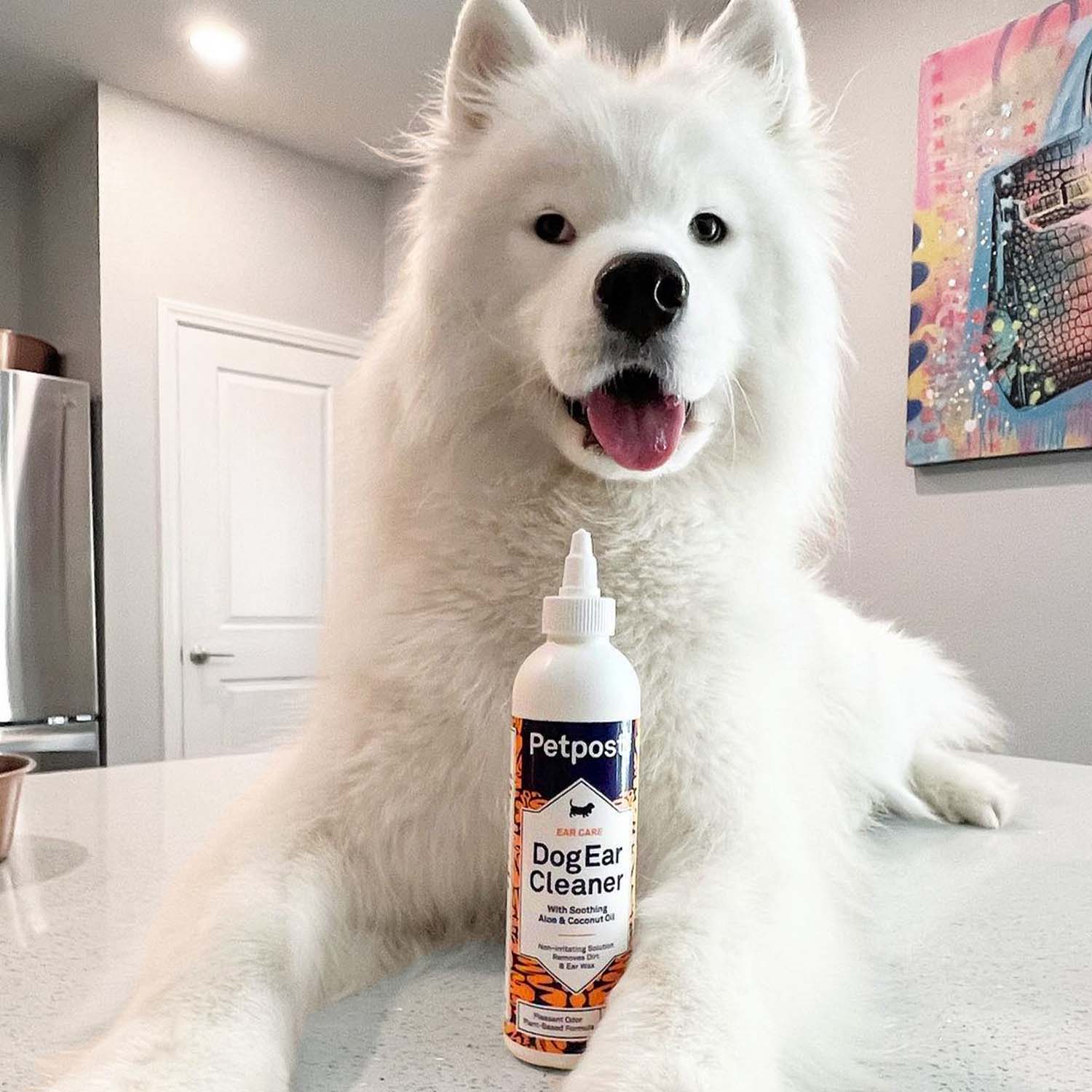The Ultimate Guide to Annoying (and Expensive) Dog Ear Problems

If you have a dog, you know that they can magically hear the slightest rustle of a treat package from at least six miles away.
Perhaps their hearing isn't quite that good, but a dog's ability to hear is certainly much better than yours. Dogs rely first on their sense of smell, secondly on hearing and finally on sight as a way to interpret their world.
So what happens when dog ear problems come up? those delicate and important organs, become clogged with dirt and oil, or even, a foreign object? In the next few paragraphs we'll look at:
- What are the first signs of an ear problem in your dog?
- What are the different types of ear issues that your dog can encounter and what are their treatments?
- Are some dogs more prone to ear infections than others?
- How can you keep your dog problem-free and healthy?
Initial Signs of Dog Ear Problems
The majority of dogs will experience an ear infection at some point in their lives. Bacteria can get trapped in the curvy canals of the ear and breed yeast that will cause itching, pain and redness. If left untreated, the pet can become quite ill and potentially, their hearing could be impaired. If you notice your pooch:
- shaking its head repeatedly
- scratching its ears or rubbing its head on the couch or carpet
- with redness on the outside or inside of its ear canal
- with more wax or debris than usual
- with a foul odor coming from the ears
If you are experiencing any of the above, then it's time to see what's going on inside that ear. You might need a second person to help you take a peek, especially if Mr. Scruffles is skittish or if his ears are very painful. Calmly and gently take a look inside the ear for redness or any discharge. You may notice a bad smell from the ear. If you are a first time dog owner or have never dealt with the symptoms of an ear infection, a visit to the vet may be your first and best bet. But if you can look inside the ear canal, perhaps even with your trusty flashlight, you might see black debris with little white specs, which may (gulp) be moving. Don’t worry, you are about to be equipped with all of the knowledge necessary to figure out what is going on and how to stop it.
What’s Going On With Your Dog’s Ears?
There are many different types of infections, and are all usually called otitis, which is just a fancy but general word for ear problem. Below we will list the main conditions that your pup might be going through and what the symptoms might be.
Otitis externa is a type of ear infection that causes redness, pain, and swelling on the outer part of your dog’s ear canal. This is a very common infection in dog’s that enjoy swimming, as excessive amounts of bacteria ripe water being trapped in the curvy depths of a dog’s ear canal is the primary cause. Signs of an external ear infection in dogs include unusually dark or brown discharge from the ear, itchiness, inflammation, and a bad odor.
Otitis media and otitis interna are both less common types of problems in dog ears, with the latter being the most severe. Otitis media affects the middle area of your dog’s ear, while otitis interna affects the inner most section which connects to the nerves and the balance and hearing centers of the brain. Symptoms of these dog ear problems are more severe, so you will notice your dog whimpering, lethargic, and experiencing pain. As with most of the ear issues we will consider, you will also notice:
- itchiness
- stinky ears
- sensitivity to contact
- inflammation and redness
- dark or black discharge
It’s very important to take action to eliminate ear infections in your dog as soon as possible, otherwise you can experience long term damage, which neither you or your pup would be happy about.

Ear mites in dogs are less common than in cats, however these parasitic ear invaders can read havoc inside of poor Fluffy’s ear canal, especially if they are left untreated. Dog ear mites cause excessive itching, and when you look into your dog’s ear wax with a magnifying glass or microscope, you might be able to see some moving around. Luckily, this nasty parasite does not have much interest in humans, but they are extremely contagious in pets and can easily be transmitted between dogs and cats even through brief encounters. Unfortunately, ear mites have become increasingly more resistant to various insecticides. Specifically pyrethrins, thiabendazole and carbaryl are becoming less effective as time goes on. Although Ivermectin is still very commonly prescribed by veterinarians, it is quite expensive and many dog owners opt for a homemade or natural remedies instead.
Yeast infections in dog ears are often caused by a common yeast known as Malassezia. When the yeast makes it’s way into a sensitive dog ear, the yeast begins to grow, causing itchiness and flaking, as well as dark discharge, sensitivity, and foul odor. Veterinarians favor topical antibiotic ointments for these types of infections, however many dog owners prefer natural alternatives because there are few or no notable side effects.
Dog Breeds Most Prone to Ear Problems
As you might imagine, a dogs ear is a warm, moist environment that can trap bacteria, letting it grow into a seriously painful condition. Dogs with large floppy ears are the most prone to infections. However, dogs can have allergies that can cause frequent and frustrating ear infections, whether their ears stand upright or flop over. Generally the hound group or other dogs with pendulous ears are more prone to ear problems:
- beagles
- bassets
- cocker spaniels
- setters
If you live in a warm, muggy climate and have a floppy eared dog, you may run into problems. Or, if your dog has an autoimmune disorder or other illness; an ear infection may also crop up.
How Can I Keep My Dog's Ears Clean?
If you have previously been to the vet for an ear infection in your dog, you know that it takes time, stress, and worst of all a big ole’ pile of money to diagnose and fight the infection. In fact, dog owners spend an average of $150 for every ear infection their dog suffers from. Petpost Dog Ear Cleaner is used by dog owners at home to safely and naturally eliminate ear problems for good.
Petpost Dog Ear Cleaner is specially formulated to powerfully treat symptoms of ear problems and gently soothe your dog’s sensitive inner and outer ear. What’s the secret?
- A Naturally Derived, Coconut Oil Based Solution
- The Most Effective Combination of Ingredients at Blasting Away Bacteria and Mites
- Reliable Formula that is Made in the USA and Trusted by Groomers and Veterinarians
- An Easy Application Nozzle to Help Make Cleanings Quick and Easy
That’s right, Petpost is a naturally derived formula that does not contain ANY harsh chemicals like other products from the vet do.
Don’t worry, your purchase is protected by Petpost’s 100% Happy Dog Guarantee. So if the Petpost Dog Ear Cleaner does not help relieve your dog's ear symptoms quickly, or if you or your dog just don't like it, we'll replace it or give you 100% of your money back, no questions asked.













Comments